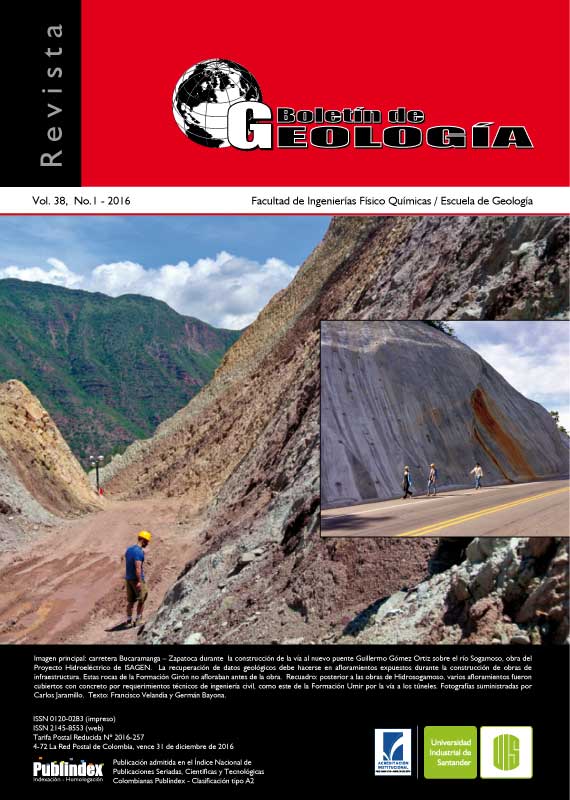RAPAKIVI MAGMATISM IN THE MIDDLE INIRIDA BASIN, GUAINÍA DEPARMENT, COLOMBIA
Published 2015-12-04
Keywords
- Rapakivi granite,
- Mitu Complex,
- Colombia,
- Guainía
How to Cite
Altmetrics
Abstract
In eastern Colombia, the crystalline basement is intruded by several anorogenic granites of Mesoproterozoic age. One of these anorogenic granitic intrusions outcrops in the area of the indigenous Matraca and Danta communities, at the middle Inirida River Basin, and is mostly covered by Tertiary sedimentary rocks and Quaternary deposits. Petrographic and geochemical analyses reveal them as holocrystalline, leucocratic, and coarse-grained monzonite to granodiorite with Pyterlite-type rapakivi texture indicating anorogenic affinity. We named this plutonic body informally as Matraca rapakivi granite, which was initially correlated with the Parguazan Event (conventional method in zircons, 1550 Ma) described in Venezuela. However, LA-ICP-MS U/Pb zircon dating yields a concordant zircon enclosure age of 1343 ± 8 Ma for the magma crystallization, in other words a 100-200 Ma younger magmatism, but also shows a coincidence with our ages of the Parguaza Granite in Colombia (LA-ICP-MS U/Pb zircon, 1390-1400 Ma). These ages suggest episodic intrusions of A-type granites between 1300-1400 Ma, associated with Nb, Ta, REE and Sn mineralizations.
